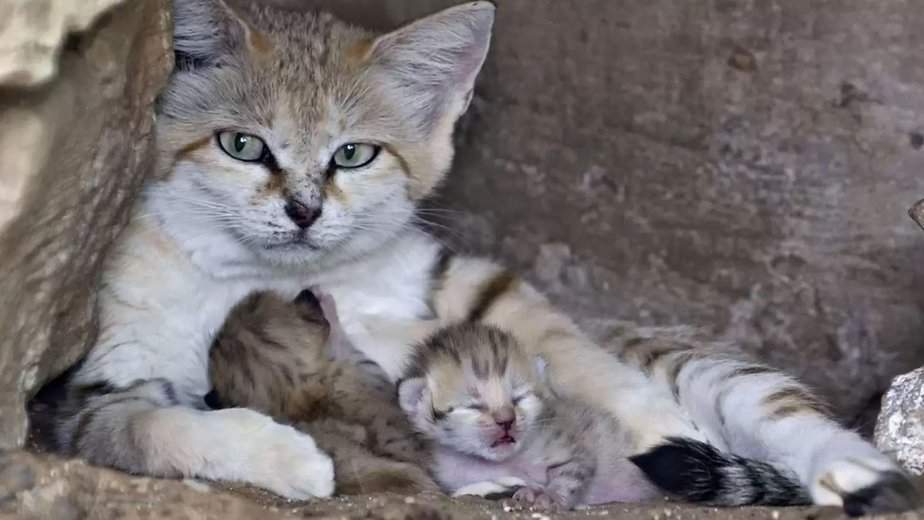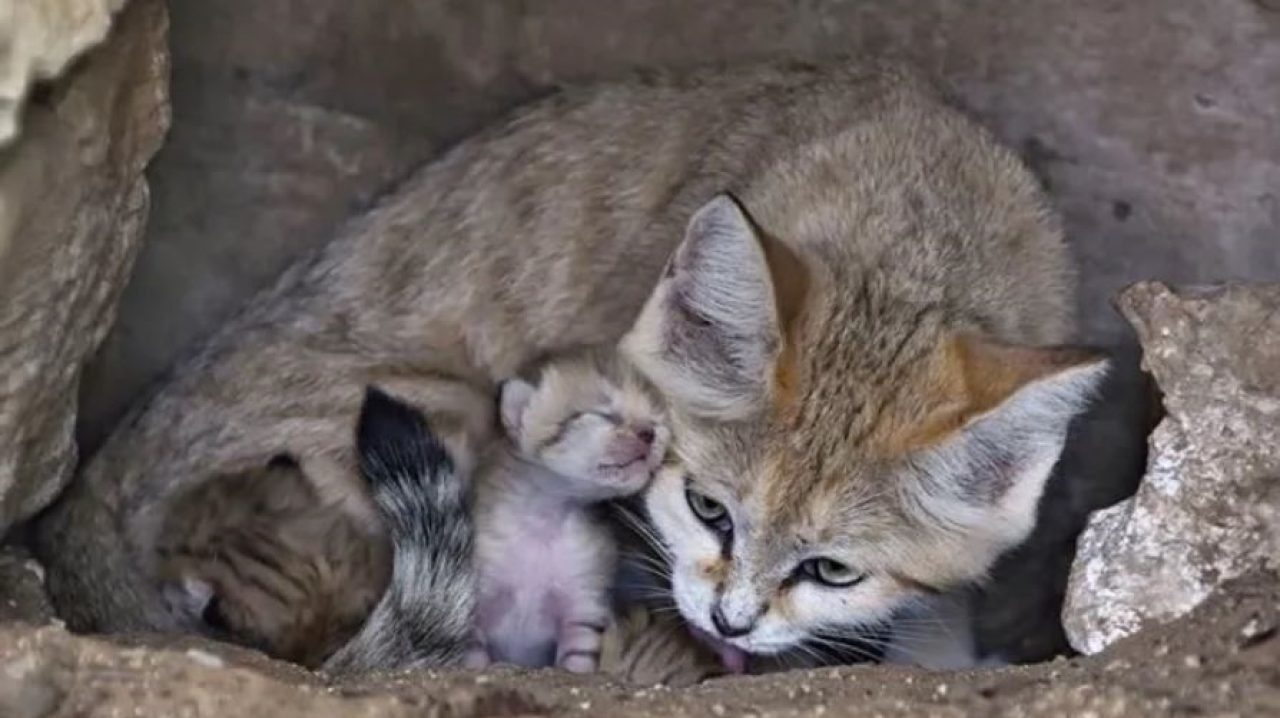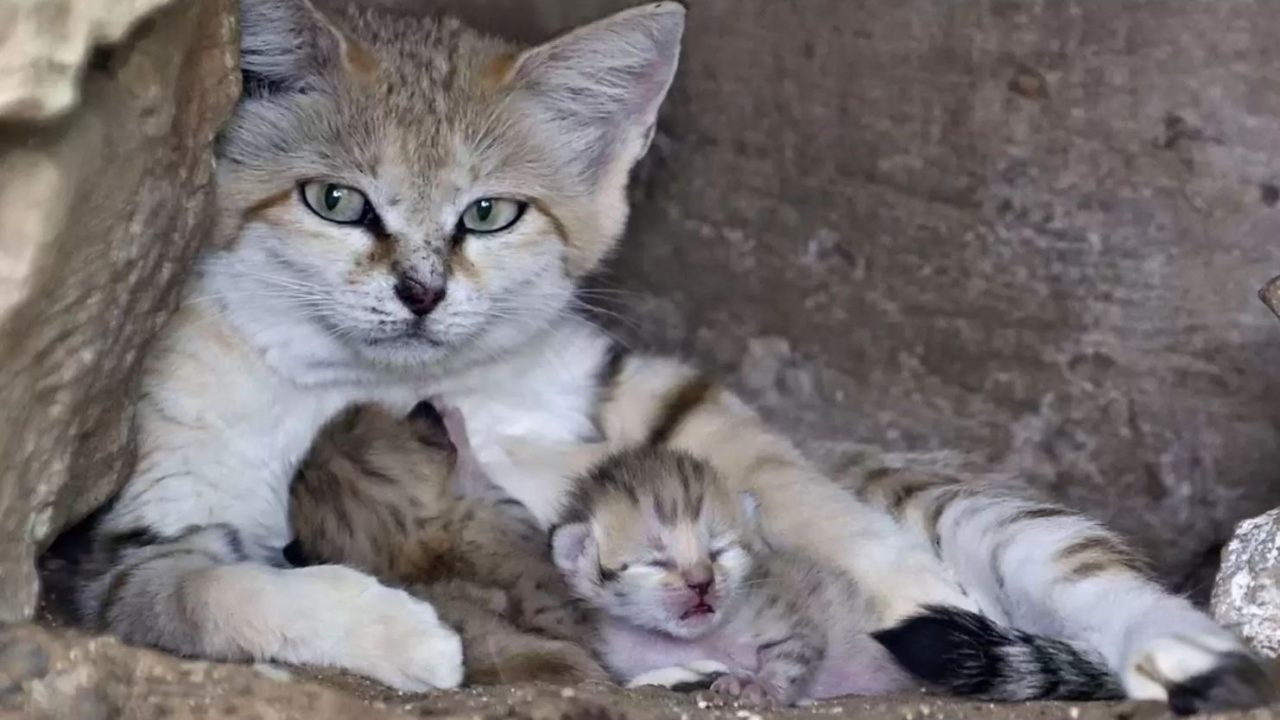When Rotem, the only surviving sand cat at the Ramat Gan Safari Park, suffered the death of her mate, everyone was praying for her to move on.
When Rotem’s keepers brought the replacement, a Swedish sand cat by the name of Kalahari, she seemed rather repulsed by the thought of hanging out with him. Naturally, the thought of mating with him was out of the question, too.
Or, that’s what the keepers at the Ramat Gan Safari thought before one of them uncovered three perfectly healthy and perfectly fluffy kittens meowing Rotem’s ears off.
When did that happen? How did that happen?! And, how did the keepers overlook the moment when Rotem decided to extend her paws toward Kalahari and cease regarding the poor tomcat’s advances as downright offensive?
Now, we are going to get to the nitty-gritty of the mind-boggling story, but not before we congratulate the happy couple. Congrats, seriously. Congrats on being a part of the global effort to breed these frisky felines and save them from extinction!
Congrats on freeing them of fate that would undoubtedly come down on them considering that they’ve been extinct in Israel and the rest of the Middle East for a very long time. However, they haven’t been extinct at the Ramat Gan Safari Park.
When Rotem’s mate Sela died, the keepers at the Safari went through thick and thin to secure a replacement and ensure that Rotem manages to breed before she dies, too. One of the spokeswomen of the Safari confessed that they had been extremely worried about the faith of sand cats at the Safari.
She argued how they had tried really, really hard to secure a mate for Rotem only for Rotem to refuse to have any contact with the mate. She mentioned how nothing happened for an entire year and they started to give up on Rotem – they were aware that she wasn’t going to live forever.
While that might sound over-the-top (and even a little hard-hearted to Rotem), she was the only one that could keep the sand cats of the Safari from becoming extinct.
When the keepers brought another sand cat (from Sweeden, out of all places), they were hoping that the two cats would take to one another. We would argue that the two cats experienced everything but attraction at first sight.
One of the spokeswomen of the Safari confessed how everyone expected that the two cats would meet, spend some time together, and take to one another – because that’s what cats do. Of course, that’s not what happened. When put together, the two cats didn’t fight or attack one another. But, they didn’t necessarily lock lips, either.
While the two cats didn’t want to cut each other’s throats, they also didn’t want to do anything with one another. Both Rotem and Kalahari simply stared at each other, occasionally sniffed each other’s butts, and kept the relationship strictly platonic.
Soon, the keepers of the Safari became desperate. Now, they didn’t want to return Kalahari to Sweeden. And, they didn’t want to push the two cats together because they were scared that they would attack each other or hurt each other out of fear and frustration.
But, they were running out of time and they didn’t think there was anything better to do than to keep them together (in the same room) for the night without disturbing them.
Even though Rotem and Kalahari had spent the night together without murdering each other, the keepers of the Safari gave up the thought of getting the two of them together. However, as the days and months went on, Rotem was growing rounder and rounder.
Before, when they were going through Rotem’s previous pregnancies, the keepers knew what was going on because Rotem and Sela mated where everyone could see them (in the cats’ open area). But, because Rotem and Kalahari couldn’t stand to spend any time together, the keepers didn’t suspect a thing.
At the end of the day, when the keepers discovered that Rotem had given birth to three precious, purrfect kittens, they were over the moon that they didn’t have to worry about getting Rotem a new mate any time soon.
We’re pretty sure that most of the people who aren’t keeping track of the Safari’s attempts to breed sand cats aren’t aware that this species is actually endangered.
Sand cats, small cats native to deserts of Africa and Asia, are considered endangered because there are not more than 10,000 of them scattered around the world (and 178 among the zoos).
Sand cats are indigenous to Israel and Jordan, which makes the fact that they’re pretty much extinct around those areas even worse. Zoos around the world are cooperating to try to preserve sand cats from going extinct, which explains why Ramat Gan Safari Park had to bring Kalahari all the way from Sweeden.
We won’t even comment on the fact that sand cats, which are endemic to Israel, have to be shipped from other countries to prevent them from going extinct. We’re happy for Rotem and her kittens, and we wish them a happy, healthy life with lots and lots of kittens to come.


